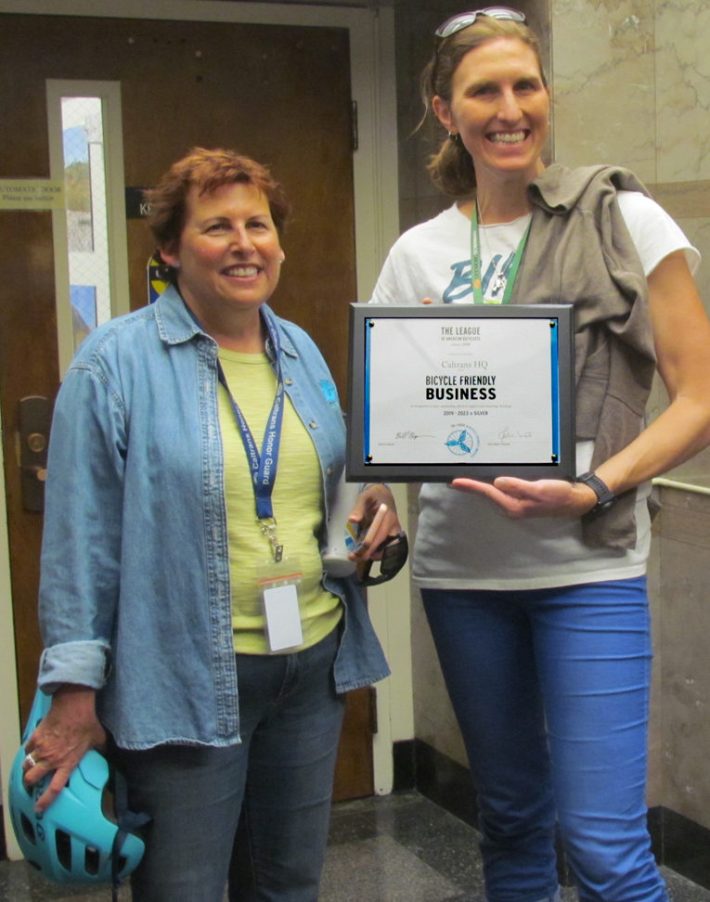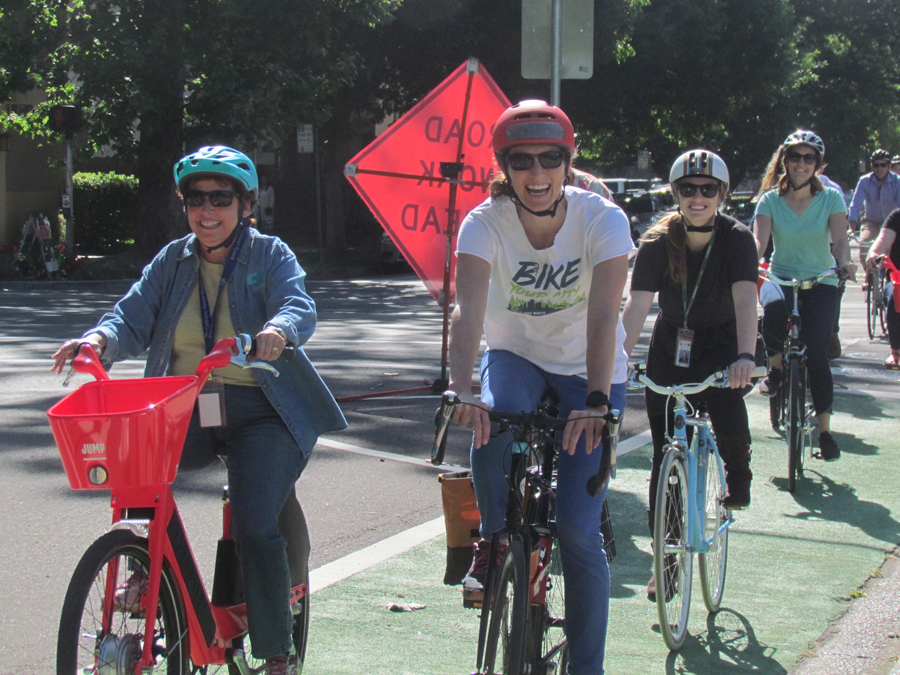Note: GJEL Accident Attorneys regularly sponsors coverage on Streetsblog San Francisco and Streetsblog California. Unless noted in the story, GJEL Accident Attorneys is not consulted for the content or editorial direction of the sponsored content.
Every year, the Caltrans Director's Ride brings together Caltrans staff and planners from the cities of Sacramento and West Sacramento to talk about the bicycle infrastructure they are building, and every year there is a little more to celebrate. For example, last year Sacramento added 25 blocks of parking protected bike lanes. And Caltrans earned a Silver Bicycle Friendly Business Award from the League of American Bicyclists in acknowledgement of the ways they are encouraging their employees to commute by bike.
This was Director Laurie Berman's first ride as director--as well as the last, she said, as she plans to retire soon. She rode one of the ubiquitous-in-Sacramento Jump bikes on the ride. She said she had heard that more women have been riding bikes because the electric bikes are so easy, so she decided to give them a try. At the most recent meeting of the California Transportation Commission, Berman told the commissioners: "I haven't ridden a bike that didn't have a little TV on it for more than twenty years. And I'm here to report that it is like. . . riding a bike. It's very easy, and pretty fun. I highly recommend it."
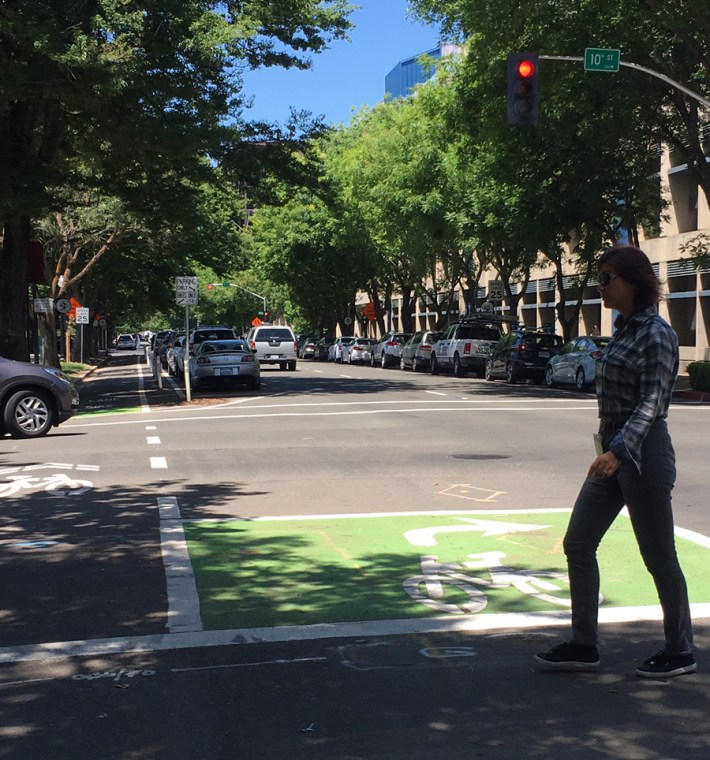
Today's ride started off from Caltrans Headquarters on N Street, and the group was immediately buzzed by a large hauler truck that gassed it around the riders, who were taking up the rightmost of three lanes, all going in the same direction. The moment drove home the need for the kinds of parking-protected bikeways the city of Sacramento has been building. Sacramento planner Jennifer Donlon Wyant said the city has plans to complete 45 more blocks within the next eighteen months.
The funding is all lined up for those projects, some of it from the Local Partners Program under S.B.1, some of it from the ACE train, which is planning a new station in Midtown and is investing $6 million in creating better access for people on foot, bikes, and transit to the new station.
Sacramento will also be working with the city of Elk Grove to build bike lanes on three miles of Franklin between the two cities.
Donlon Wyant led the first part of the ride, pointing out various aspects of the new facilities such as bike boxes that make it easier for bike riders to move in and out of the bikeways. She emphasized the collaborative effort it took to complete the work. "Working with our partners is really important," she said. "That is how we are able to do this."
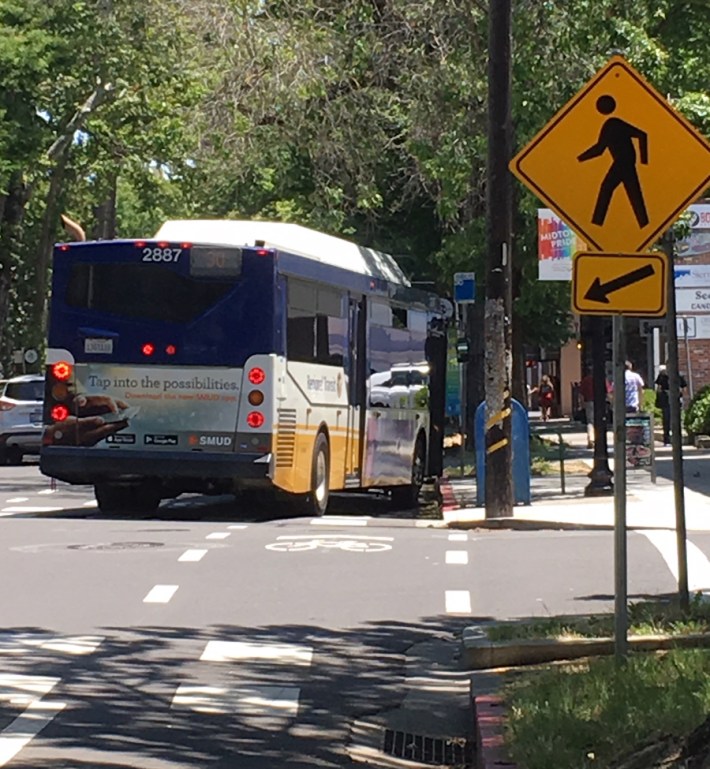
She enumerated the different internal and external partners that have helped move the city's infrastructure ahead of similar-sized cities in the state. "The parking division has been a great partner," she said. "We lost a lot of parking when we built these bikeways, especially at intersections, and they really understand what we're doing; they get the safety part of it." Solid waste management also had to be on board, for several reasons. The bikeways required the acquisition of a new, narrower street sweeper, and the division had to figure out new work schedules to accommodate the new task. The same division also handles trash pickup. In the areas where the parking protected lanes have already been added, that takes place mostly in alleyways, away from the bikeways--but the planned ones will be on streets where people put their bins in the street on the trash pickup day.
It's key that the various departments be able to communicate and support each other, and that particular issue is one they are still working on. Donlon Wyant emphasized that every corridor has slightly different issues, and each one has different solutions.
She is also enthusiastic about the support the projects have gotten from external partners like the city council and the business district in midtown, where a new parking protected lane was installed on J street as part of a repaving plan. That corridor has a lot of bus traffic as well, and they had to work with the transit agency to find a solution for the bus stops. "We are a poor city," said Donlon Wyant, "and one of the things we don't have money for is bus stop islands. So we have to work together on a solution."
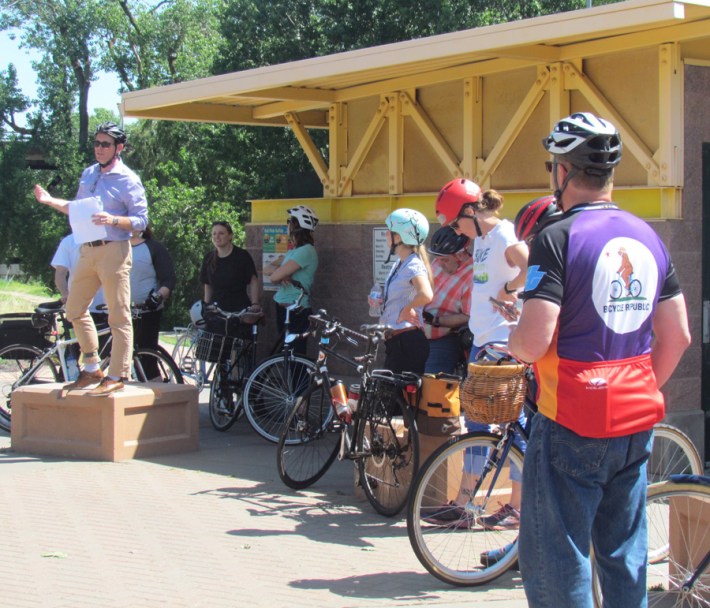
Chris Dougherty of West Sacramento rounded out the ride with a tour through part of that city, where 7500 units of new housing and 8.3 million square feet of commercial space is planned. People living in those new units will be closer to downtown Sacramento than some of the residents in Midtown, and there has already been enthusiastic response for the units that have been built.
The city, along with Sacramento, has had a plan in the works for many years to build some kind of light rail between the two, although it isn't much closer to reality today than when the idea was floated. Meanwhile, though, West Sacramento has created an affordable system of on-demand shuttles available to everyone, and has found a high level of interest for it, especially among seniors and youth. The two cities together also have had very high adoption rates of bike-share, in the form of Jump bikes.
The former industrial area where much of the West Sacramento construction will happen is today a tabula rasa for high-quality infrastructure, and Dougherty says the small city has been "punching above its weight" in terms of garnering state grants to further their plans. The idea is to add a lot of housing near jobs in downtown Sacramento and near transit, including the Capitol Corridor train, and easily accessible by bike, walking, and whatever kind of transit they end up with.
